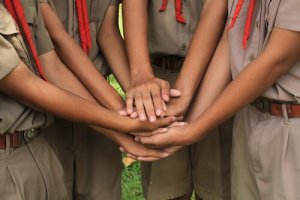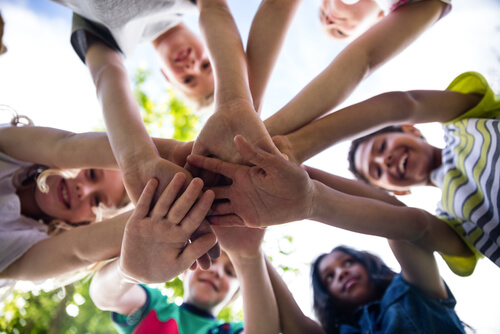The Robber's Cave - a Curious Experiment

The Robber’s Cave experiment is one of the most classic in social psychology. It was carried out in 1945 by Muzafer Sherif and Carolyn Sherif, University of Oklahoma (USA) professors. They wanted to identify keys that would allow us to better understand social prejudices.
The Robber’s Cave experiment focused on the “group” concept. They were trying to show how people perceive they belong to a certain group, how relationships are shaped within it, and how a group relates to others.
“Prejudices are beliefs prior to observation”.
-José Ingenieros-
They also wanted to identify how conflict between two groups comes up or intensifies. When there are two groups in which their members have developed a strong sense of belonging to the group, rejection of other groups they do not belong to – and the characteristics of those groups – intensifies. But also this can be reversed. Let’s take a look at how they did the study.
The Robber’s Cave experiment
To carry out the study, the researchers chose 22 11-year-old boys. They were all “normal” children. This means that they had no history of bad behavior, came from stable families and had performance in good school. They were all middle class and none of them knew that they were participating in an experiment.

TheRobber’s Cave experiment had three phases: first, the researchers stimulated a feeling of belonging to the group. The second was the friction phase, in which researchers deliberately created situations to make conflict with another group. The final phase was integration, in which the researchers were going to try to resolve the conflicts and lessen the perceived differences between groups.
Belonging and conflict
During the first week, activities were developed to strengthen relationships within each group. The boys hiked together, went to the pool together and did different recreational activities. Each group was asked to choose a name and a flag. One of the groups chose to be called “Eagles” and the other “Rattlesnakes”.
In this first stage, researchers saw that group members identified with their group and developed a strong sense of belonging. Within a few days, hierarchies and different internal roles appeared. Each member bonded differently with others within each group.
In the second week they found out that there was another group. From the beginning, each group was defensive towards the other. There were clear barriers. The children themselves asked the researchers to put on competitive activities between the two groups. They did this and even offered a prize to the winner, which in the end was the “Rattlesnakes”.
From then on, the groups were hostile to each other. There was a lot of friction, and the boys refused to eat together in the same place. They rejected each other to the point that that the researchers decided to put an end to the phase sooner than they had planned, fearing that the situation would get out of hand.
Researchers in the Robber’s Cave experiment proved that a sense of belonging and prejudice against others go hand in hand. They also realized how easy it was to increase the feeling of belonging to a group and generate hatred towards other groups.
The power of common goals
In the final phase, the researchers created activities that required both groups to cooperate. One of them creating a fictitious problem. They said that a vandal had destroyed the water reserves (creating a common enemy). They had to fix the water supply. To achieve this, both groups worked together.

Later, researchers said they would put on a movie that everyone liked, but they would have to pay for it. Neither group was able to pay the amount needed and again they had to cooperate to reach the common goal.
After solving several problems together, the mutual hate began to disappear. So much so that when they returned home, both groups asked to go on the same bus. When they reached a rest stop, the “Rattlesnakes” group used the money they won in the competition to buy drinks for everyone.
The Robber’s Cave researchers concluded that creating common problems and, in turn, common goals was a way to resolve conflicts between groups. The researchers called this “realistic conflict theory”. They pointed out that solving common problems together causes prejudices to disappear little by little until they are gone.
This text is provided for informational purposes only and does not replace consultation with a professional. If in doubt, consult your specialist.








